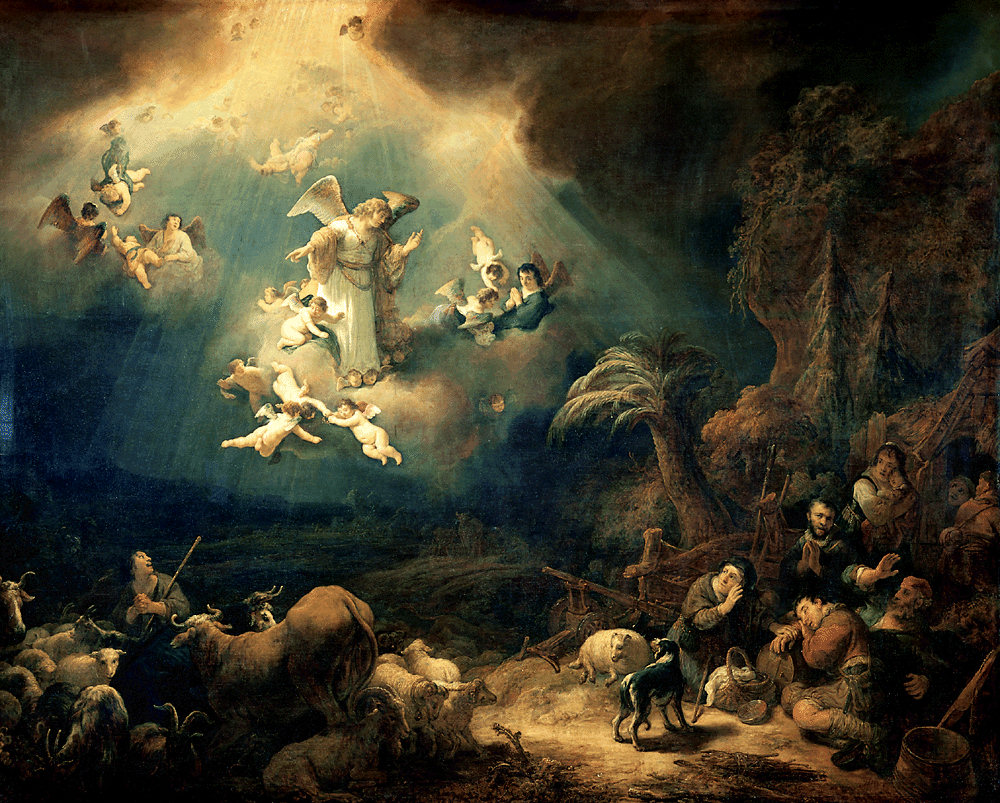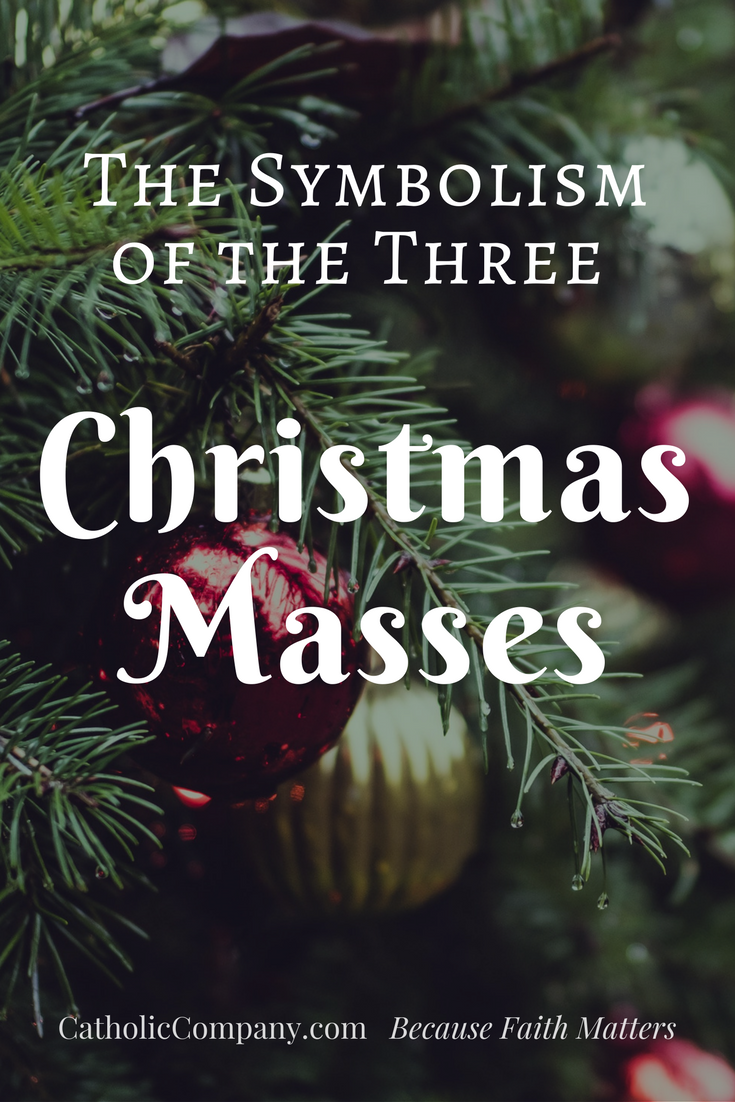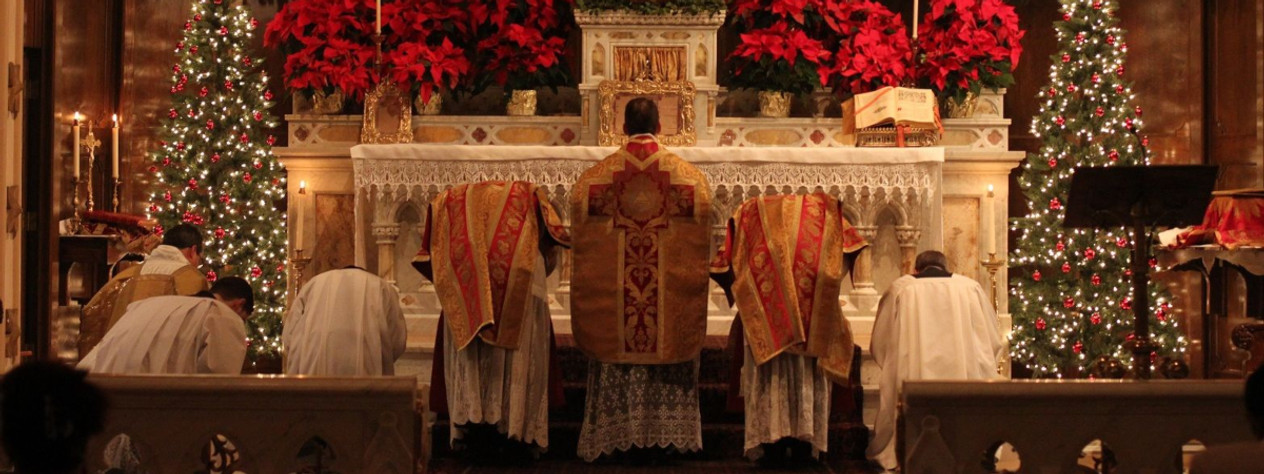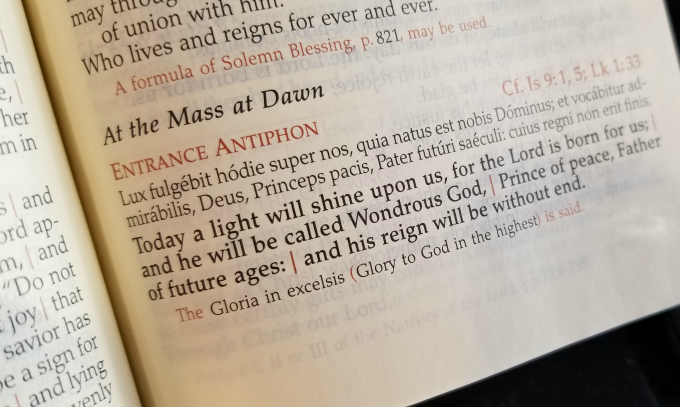The Symbolism Of The Three Christmas Masses
Dec 23, 2020 by Gretchen Filz
Christmas is the holiest day of the year. Just as we celebrate Easter with a triduum of liturgies (Holy Thursday, Good Friday, and the Easter Vigil), Christmas is celebrated with a "triduum" of Masses.
There are three Masses celebrated on Christmas Day: one at midnight, one at dawn, and one during the day.
Each Mass is distinct and highlights a different aspect of the Christmas story.
MIDNIGHT MASS: THE ANGELS' MASS
According to tradition, Jesus was born in Bethlehem at midnight. (This tradition is recalled in the beautiful St. Andrew Christmas Novena.)
The Church celebrates the first Christmas Mass at midnight to honor the very hour that our Savior came into the world to save us. The darkness of midnight also parallels humanity's condition of spiritual darkness as the world awaited the radiant birth of the promised Messiah.
The Responsorial Psalm for this Mass proclaims the joyful tidings of the Angel: "Today is born our Savior, Christ the Lord."
The Gospel reading for this Mass tells the first part of the Christmas story from the Gospel of Luke, when Baby Jesus is born and the Angels herald the Good News to the shepherds tending their flocks. That's why the Midnight Mass is traditionally referred to as "The Angel's Mass."

Gospel Reading for the Midnight Mass (Luke 2:1-14)
R. Alleluia, alleluia.
I proclaim to you good news of great joy: today a Savior is born for us, Christ the Lord.
R. Alleluia, alleluia.
In those days a decree went out from Caesar Augustus that all the world should be enrolled. This was the first enrollment, when Quirin′i-us was governor of Syria. And all went to be enrolled, each to his own city. And Joseph also went up from Galilee, from the city of Nazareth, to Judea, to the city of David, which is called Bethlehem, because he was of the house and lineage of David, to be enrolled with Mary, his betrothed, who was with child. And while they were there, the time came for her to be delivered. And she gave birth to her first-born[a] son and wrapped him in swaddling cloths, and laid him in a manger, because there was no place for them in the inn.
And in that region there were shepherds out in the field, keeping watch over their flock by night. And an angel of the Lord appeared to them, and the glory of the Lord shone around them, and they were filled with fear. And the angel said to them, “Be not afraid; for behold, I bring you good news of a great joy which will come to all the people; for to you is born this day in the city of David a Savior, who is Christ the Lord. And this will be a sign for you: you will find a babe wrapped in swaddling cloths and lying in a manger.” And suddenly there was with the angel a multitude of the heavenly host praising God and saying,
“Glory to God in the highest, and on earth peace among men with whom he is pleased!”
MASS AT DAWN: THE SHEPHERD'S MASS
The second Christmas Mass is celebrated at dawn.
Sacred Scripture draws a parallel between Christ and the sun. As the sun begins to rise over the darkness of the land, it calls to mind how Jesus, the Light of the World, dispelled the darkness of sin and death at His birth.
The Responsorial Psalm highlights this theme: "A light will shine on us this day: the Lord is born for us."
The Gospel reading for this Mass continues the Christmas story from the Gospel of Luke.
After the Angel announces the Good News to the shepherds, the shepherds hasten to Joseph and Mary to worship the Christ Child. The shepherds then joyfully proclaim the Good News to others. Therefore Christmas Mass at Dawn is traditionally referred to as "The Shepherd's Mass."

Gospel Reading for the Dawn Mass (Luke 2:15-20)
R. Alleluia, alleluia.
Glory to God in the highest, and on earth peace to those on whom his favor rests.
R. Alleluia, alleluia.
When the angels went away from them into heaven, the shepherds said to one another, “Let us go over to Bethlehem and see this thing that has happened, which the Lord has made known to us.” And they went with haste, and found Mary and Joseph, and the babe lying in a manger. And when they saw it they made known the saying which had been told them concerning this child; and all who heard it wondered at what the shepherds told them. But Mary kept all these things, pondering them in her heart. And the shepherds returned, glorifying and praising God for all they had heard and seen, as it had been told them.
MASS ON CHRISTMAS DAY: THE KING'S MASS

The final Christmas Mass is celebrated in the fullness of daylight, signifying that the promised Son of God has now been revealed to the whole world.
The Responsorial Psalm for this Mass declares this by saying: "All the ends of the earth have seen the saving power of God."
The Gospel reading is a call for all people and nations to worship the newborn King of Kings. Therefore this Mass is traditionally referred to as "The King's Mass."
Gospel Reading for Mass During the Day (John 1:1-18)
R. Alleluia, alleluia.
A holy day has dawned upon us. Come, you nations, and adore the Lord. For today a great light has come upon the earth.
R. Alleluia, alleluia.
In the beginning was the Word, and the Word was with God, and the Word was God. He was with God in the beginning. Through him all things were made; without him nothing was made that has been made. In him was life, and that life was the light of all mankind. The light shines in the darkness, and the darkness has not overcome it.
There was a man sent from God whose name was John. He came as a witness to testify concerning that light, so that through him all might believe. He himself was not the light; he came only as a witness to the light.
The true light that gives light to everyone was coming into the world. He was in the world, and though the world was made through him, the world did not recognize him. He came to that which was his own, but his own did not receive him. Yet to all who did receive him, to those who believed in his name, he gave the right to become children of God— children born not of natural descent, nor of human decision or a husband’s will, but born of God.
The Word became flesh and made his dwelling among us. We have seen his glory, the glory of the one and only Son, who came from the Father, full of grace and truth.
(John testified concerning him. He cried out, saying, “This is the one I spoke about when I said, ‘He who comes after me has surpassed me because he was before me.’”) Out of his fullness we have all received grace in place of grace already given. For the law was given through Moses; grace and truth came through Jesus Christ. No one has ever seen God, but the one and only Son, who is himself God and is in closest relationship with the Father, has made him known.
No matter which Christmas Mass you attend, you can flip through your missal and read all of the Christmas liturgies in order to celebrate the fullness of the Church's joy at the birth of our Savior.
Which Christmas Mass do you usually attend with your family? Share with us in the comments below!
Further reading: Does Christmas End on Epiphany?

This article has been updated. It was first published in 2017. © The Catholic Company. All rights reserved.






